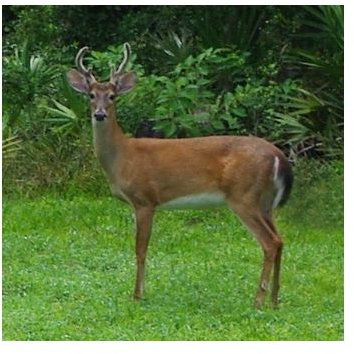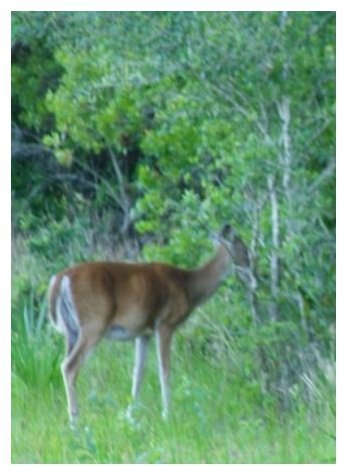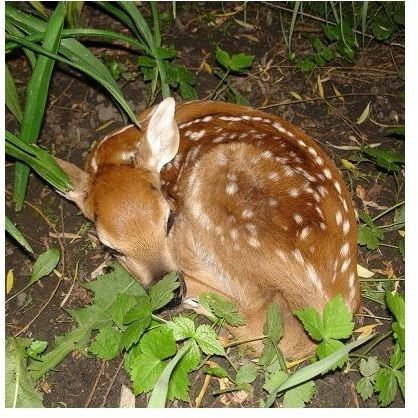White Tailed Deer Facts: Learn About White-Tail Deer Habitat, Diet, Behavior & More
White Tailed Deer Facts

Description
In the spring and summer months, the coat of a white tailed deer is reddish-brown in color. In the fall and winter, the coat turns to a duller grayish-brown color. The coat of a young deer, fawn, is reddish in color with white spots. The spots normally disappear in 3-4 months, by winter time, as the winter coat begins to grow. As the name implies, the under side of the tail is white.
The male white tailed deer, buck, normally weighs about 130-300 pounds. The female, doe, weighs about 90-200 pounds. The average height is 3 feet.
One fun fact about the white tailed deer is the male will regrow a set of antlers every year. During the first year of his life, he will grow a single spike antler and by the age of three, he will have about 8 points on his antlers. In late fall, when the mating season is over, the antlers will shed off and in the beginning of summer, new antlers begin to grow. About 1 in 10,000 female deer have antlers; however, this normally occurs because the deer has both male and female characteristics.
Habitat
The white tailed deer is native to the United States. They can be found in all states except California, Nevada, Utah, Alaska, and Hawaii (the black tailed deer, a close relative, can be found in these areas). The white tailed deer is also native to Canada, Mexico, and Central and South America.
The larger deer can be found in the northern parts of the U.S. and Canada while the smaller deer live further south. Most live in forests but many can adapt to other habitats, including farmland, swamps, and deserts.
The white tailed deer was introduced to other countries, including New Zealand and some regions in Europe.

Diet
The diet of the white tailed deer varies, depending on the time of the year. In the summer, they normally eat green plants, aquatic plants, nuts, and fruits. In the fall, they mostly eat evergreen plants and grasses. In the winter, they basically survive off of woody plants.
Another fun fact about the white tailed deer is their stomach has four chambers and each one functions differently. After eating quickly, to avoid predators, they will find a safe area to rest and digest their food. To improve digestion, they will regurgitate their food, chew it for a second time, and swallow.
Behavior and Reproduction
The male white tailed deer will compete among other males for the female. Bucks will attempt to mate with as many females as they can. During this time, he will rarely eat or rest.
In mid to late spring, the doe will give birth to 1-3 fawns. Fawns can walk at birth and in a few days they will begin nibbling on vegetation. They are weaned from their mother in about 8-10 weeks. Young females usually stay with their mother for 2 years while young males leave sooner, about 1 year.
The female white tailed deer is very protective of her young. When searching for food, the mother will hide her offspring until they are old enough to follow her, about 4 weeks of age. The fawn will lie quietly on the ground and its spots will help camouflage him or her from predators.

More White Tailed Deer Facts
The white tailed deer will raise its tail to expose the white underside to warn other deer of danger. The female deer will raise it to make it easier for her young to follow her.
Most deer in the wild live only 2-3 years. Few live longer than 10 years. In captivity, they can live up to 20 years.
White tailed deer can run as fast as 36 mph, jump as high as 8 1/2 feet, and leap as far as 30 feet. They are also very good swimmers.
Photo Credit
Buck image courtesy of Elena Cooper
Doe image by Diana Cooper
Fawn image courtesy of John Delano of Hammond, Indiana